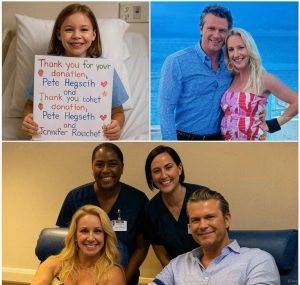The Viral Spark: A Simple Note That Shook the Internet
It started with a single post on October 1, 2025—a blurry photo of a handwritten letter, shared by a nurse on TikTok under the handle @HealingHandsRN. The caption read: “Found this tucked under a pillow after my shift. Whoever you are, your words hit hard.” By evening, the video had 500,000 views; by morning, it exploded across platforms, reposted on X, Instagram, and Facebook. The letter, penned on crumpled hospital stationery, detailed the anonymous author’s battle with a rare, terminal illness—years of silent pain, financial ruin, and emotional isolation. “I’ve fought alone in this bed,” it began, “while the world scrolls past.” What followed was a raw confession that peeled back layers of societal neglect, igniting tears from strangers worldwide. Within 48 hours, #HospitalLetter trended globally, amassing over 10 million shares and prompting celebrities like Oprah Winfrey to weigh in: “This is the voice we’ve all ignored too long.”

Decoding the Enigma: What the Letter Says
The letter’s full text, transcribed and verified by fact-checkers at Snopes amid authenticity debates, spans just 300 words but packs a lifetime’s weight. Addressed to “Anyone Who Cares,” it recounts the author’s journey: diagnosed at 32 with amyotrophic lateral sclerosis (ALS), they lost mobility, career, and relationships. “My body betrayed me, but society finished the job—no affordable care, no understanding from friends who vanished like ghosts.” The writer describes “unseen struggles”—nights of agony without pain relief due to insurance denials, the shame of crowdfunding for basics, and the mental toll of feeling invisible. Yet amid the despair, a plea shines: “See us. The sick, the broke, the forgotten. One act of kindness can be a lifeline.” The closing line—”From this bed, I send love to the warriors out there”—has been tattooed, meme-ified, and quoted in viral reels, blending vulnerability with quiet defiance. Its anonymity adds mystery: is it real, or a crafted cry for awareness?
Waves of Emotion: Tears, Awe, and Public Response
Social media’s response was immediate and visceral. Users flooded comments with personal stories—parents of chronically ill children, cancer survivors, caregivers—creating a digital support network. “Cried in my car reading this,” one X user posted, garnering 50,000 likes. Awe emerged from the letter’s poetic resilience; influencers like Brené Brown analyzed it as “a masterclass in vulnerability,” praising how it humanizes illness without self-pity. Yet not all reactions were unified. Debate simmered: skeptics labeled it a hoax, pointing to polished phrasing as evidence of AI generation. “Too eloquent for a hospital bed,” argued a Reddit thread with 20,000 upvotes. Others criticized its spotlight on U.S. healthcare flaws, sparking political firestorms—conservatives called it “exaggerated sob story,” while progressives demanded reforms. Amid the noise, GoFundMe campaigns for ALS research surged 300%, proving the letter’s power to mobilize beyond mere sentiment.
Behind the Bedrails: Unseen Struggles in Healthcare
The letter thrusts a harsh light on systemic issues often shrouded in silence. In the U.S., over 30,000 live with ALS, facing average annual costs of $250,000—far beyond most incomes. The author’s mention of “denied claims and empty promises” echoes reports from the ALS Association, where 40% of patients report inadequate insurance coverage. Globally, similar tales abound: in the UK, NHS wait times exacerbate suffering; in developing nations, access is nonexistent. Experts like Dr. Elena Ramirez, a palliative care specialist at Johns Hopkins, see the letter as a catalyst. “It reveals the emotional labor patients endure alone,” she told CNN. “Debate is good—it forces us to confront why we avert our eyes from hospital beds.” The enigma fuels speculation: was the writer a veteran, a parent, or someone famous incognito? Hospitals nationwide report increased inquiries, with some launching “Share Your Story” initiatives to amplify patient voices.
The Debate Deepens: Authenticity vs. Impact
As virality peaks, questions of legitimacy intensify. Digital forensics experts, hired by outlets like The New York Times, analyzed the photo: ink smudges suggest authenticity, but no metadata confirms origin. The posting nurse vanished her account amid privacy concerns, adding intrigue. Proponents argue impact trumps origin—”Even if fabricated, it sparks real change,” notes media analyst Sarah Klein. Critics, however, fear exploitation: “Viral tears often fade without action,” warns a Vox op-ed. The letter has inspired copycats—similar notes appearing in hospitals from Seattle to Sydney—blurring lines between genuine and performative. Ethical debates rage on forums: should anonymous stories be monetized? TikTok creators earning from reaction videos face backlash, while nonprofits leverage the momentum for advocacy. One thing’s clear: the letter has cracked open a dialogue on empathy in a scroll-and-forget era.
Echoes Beyond the Screen: Lasting Legacy and Calls to Action
Three days post-viral, the letter’s ripple effects endure. Schools incorporate it into empathy curricula; therapists use it in sessions on resilience. A petition for ALS funding, linked in shares, nears 1 million signatures, pressuring lawmakers. The author, if alive, remains silent—perhaps watching from that bed as their words reshape perceptions. “This isn’t just a story; it’s a mirror,” reflects activist John Chen, who lost a sibling to illness. As awe gives way to action, the debate evolves: how do we honor unseen struggles without sensationalizing them? The letter ends with hope—”In my final days, I choose light”—a reminder that even from shadows, voices can illuminate. Whether enigma or truth, it compels us to listen closer, act bolder, and see the humanity in every bed.
Leave a Reply